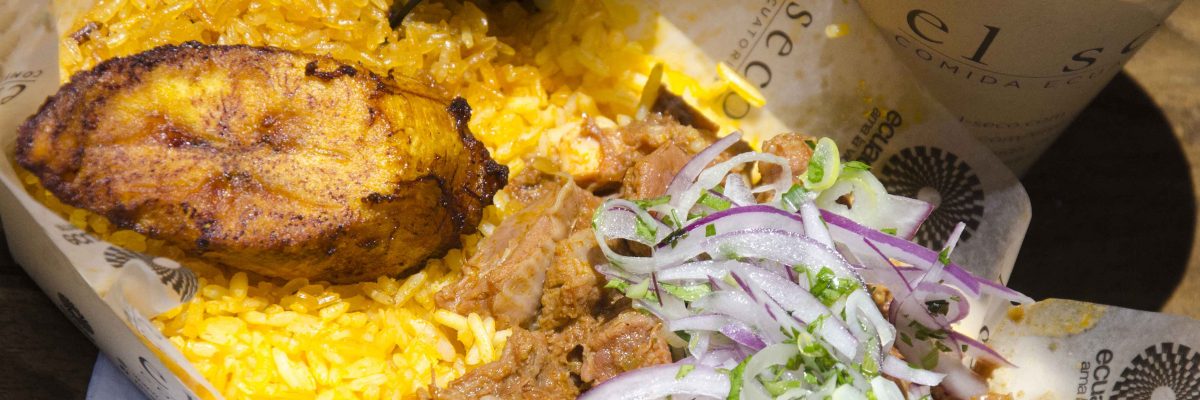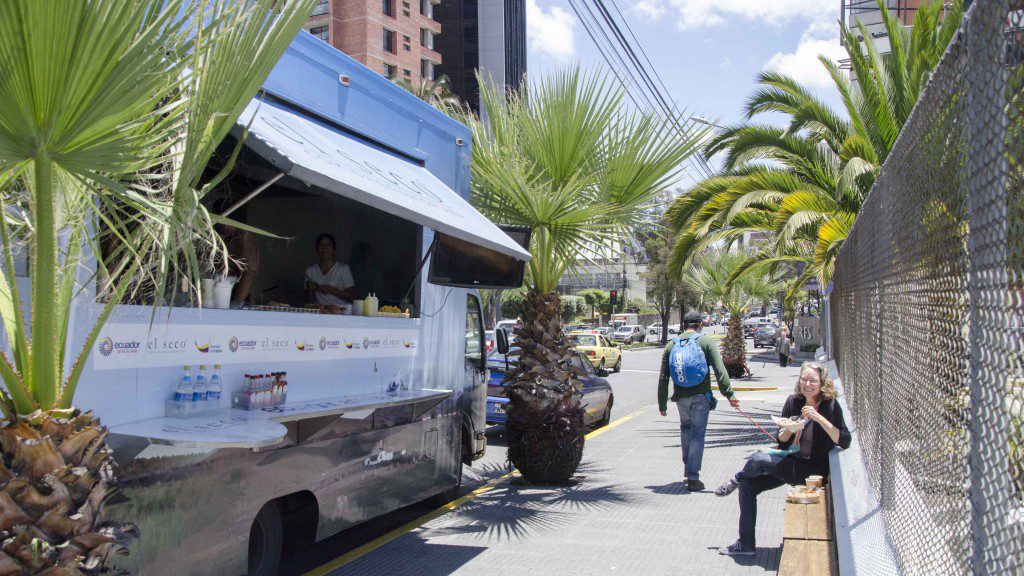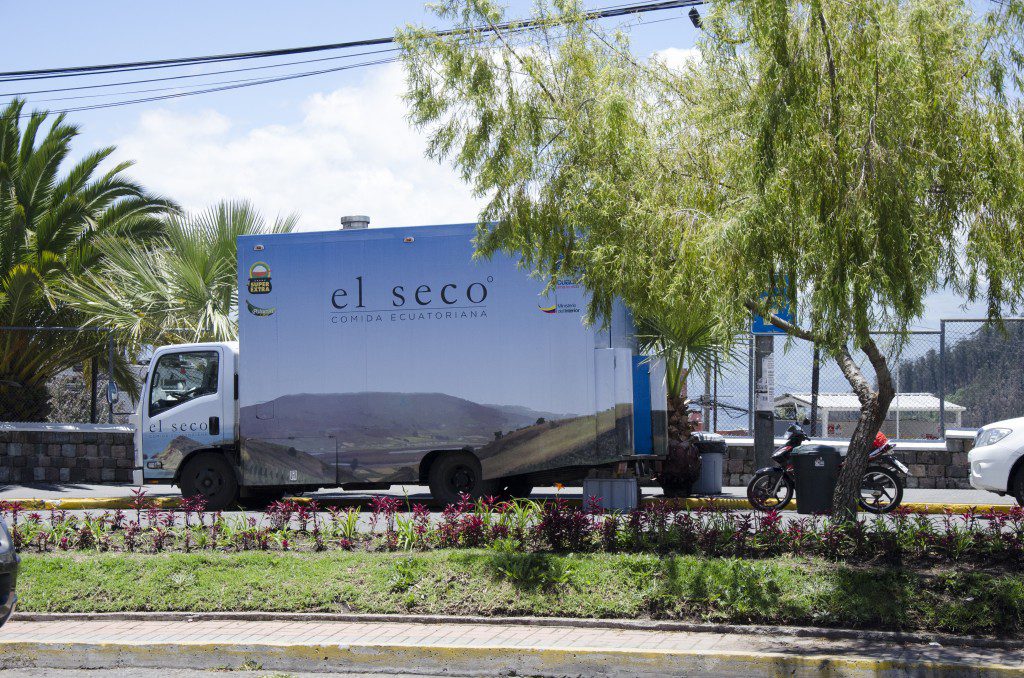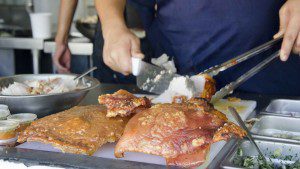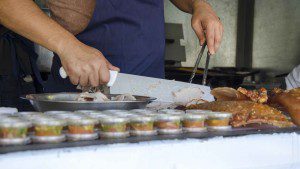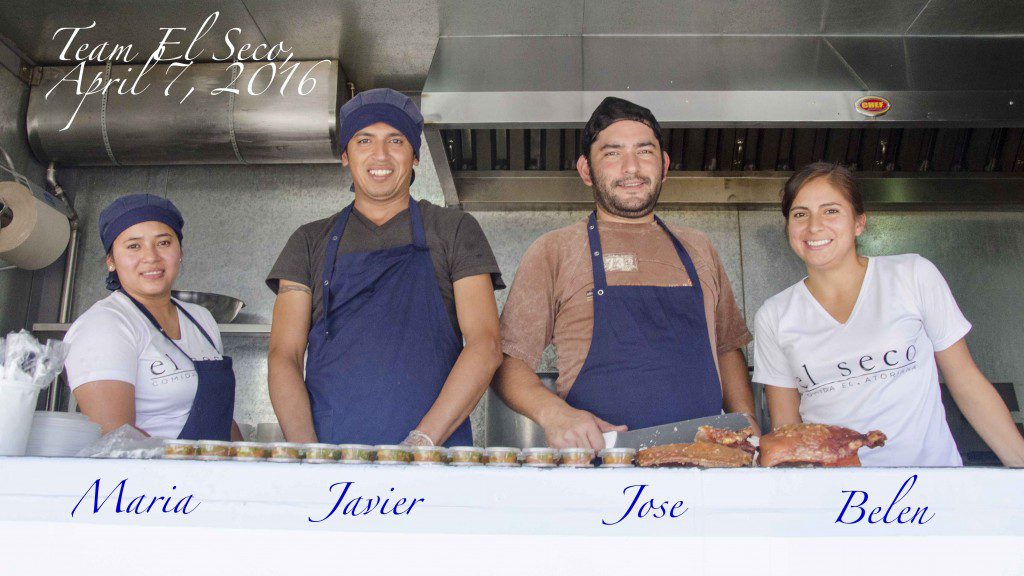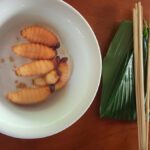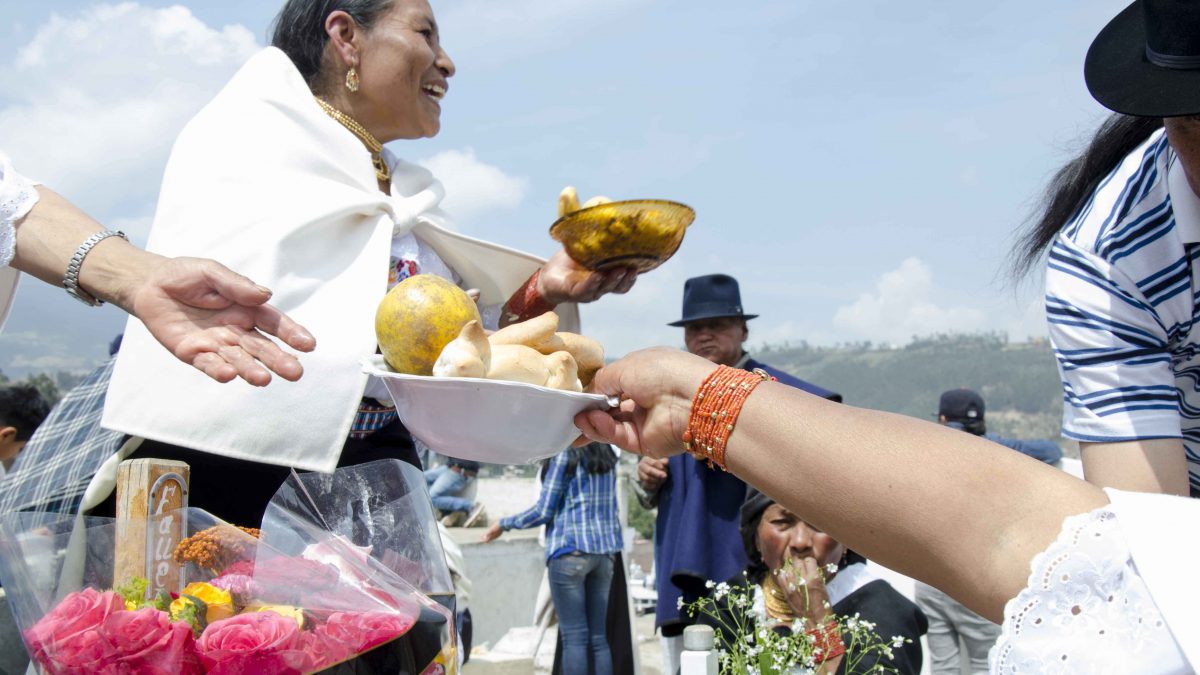If you love food trucks and you love Ecuadorian food, I have the perfect answer for your next meal – el seco. Of course, you’ll have to be in Quito because currently this food truck can only be found on the streets in the capitol city of Ecuador. Each day brings a new location but fortunately, el seco advertises their next stop on their Facebook page:
https://www.facebook.com/elsecocomidaecuador/?fref=ts
That’s how I managed to find out that they would be in the Gonzalez Suarez neighborhood right next to Hotel Quito. My youngest son and I set out on a mission to see what el seco had to offer. Of course, because we’ve lived locally for a while, we had a head start on what to expect.
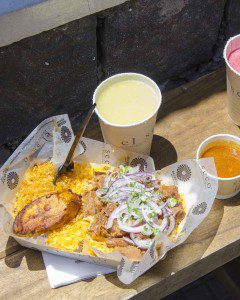 A seco is a traditional dish of Ecuador, found both in the Sierra and on the Coast. It is a stewed dish, usually made from goat (Seco de Chivo) but also from beef or from chicken. Whatever meat is used is braised in a liquid that can tenderize the meat. Some recipes use beer, others fruit juices from either the tamarind or the naranjilla. And that is why many wonder at the name. The word seco literally means dry yet this dish is known for its wonderful wet gravy.
A seco is a traditional dish of Ecuador, found both in the Sierra and on the Coast. It is a stewed dish, usually made from goat (Seco de Chivo) but also from beef or from chicken. Whatever meat is used is braised in a liquid that can tenderize the meat. Some recipes use beer, others fruit juices from either the tamarind or the naranjilla. And that is why many wonder at the name. The word seco literally means dry yet this dish is known for its wonderful wet gravy.
We arrived early, at 11:30am, and the crew was already hard at work. The food truck, or camioncito, was parked alongside the street, its sky blue paneling proudly advertising to passing cars that el seco was in the neighborhood.
 We walked up to the counter, feeling just a tad short but appreciating the direct view of the cuero, or crispy fried pork skin, right before our eyes. A young lady handed us a small cup with patacones, deep fried green plantains, on the house. One bite of those and we were sold.
We walked up to the counter, feeling just a tad short but appreciating the direct view of the cuero, or crispy fried pork skin, right before our eyes. A young lady handed us a small cup with patacones, deep fried green plantains, on the house. One bite of those and we were sold.
Business first, however. I conducted my interview and found out that el seco has been touring the streets of Quito since last November. Team leader Belen, who was kind enough to answer all my questions, is the sister of Guillermo Miranda, the owner of the camioncito and the el seco concept. And a concept it is and one that can be tough to explain to locals who think that a seco is just home cooked food. On his website, Guillermo writes (in Spanish, of course):
But why seco As signature dish? Well, why not? It is one of many Ecuadorian recipes which have delighted millions, it is extremely tasty and enigmatic, and because nobody knows for sure the reason why its name means dry but it is a dish that is wet. But let us not get off topic! I am trying to explain seco as an emblematic dish of a cuisine as rich and extensive as that of Ecuador. The reason is that this person irrefutably believes that Ecuadorian cuisine has the makings of one of the best cuisines of this beautiful planet. This is an attempt to identify, refine and to make into an icon, a local dish which can become an example of excellence of our generous, diverse and well-established cuisine.
 I have to tell, Guillermo is doing this right. We ordered two different secos. I tried the Seco de Chivo and the goat meat was tender and rich, with only the occasionally chewy piece. The sauce was unctuous, which a sheen of fat shimmering across its surface. El seco serves the sauce on the side so that you can add as much or as little as you like. My son tried the Seco de Pollo. It was also tender and pulled apart as only a perfectly cooked piece of chicken can. Both dishes were served with bright yellow rice and included a small portion of the crunchy bottom of the pot rice that is beloved by Ecuadorians. The stews were topped with a crunchy onion and cilantro salad and were accompanied by my favorite, a thick slice of fried ripe plantain. We each order a fresh fruit juice and the total for both of our lunches came to a grand $10.
I have to tell, Guillermo is doing this right. We ordered two different secos. I tried the Seco de Chivo and the goat meat was tender and rich, with only the occasionally chewy piece. The sauce was unctuous, which a sheen of fat shimmering across its surface. El seco serves the sauce on the side so that you can add as much or as little as you like. My son tried the Seco de Pollo. It was also tender and pulled apart as only a perfectly cooked piece of chicken can. Both dishes were served with bright yellow rice and included a small portion of the crunchy bottom of the pot rice that is beloved by Ecuadorians. The stews were topped with a crunchy onion and cilantro salad and were accompanied by my favorite, a thick slice of fried ripe plantain. We each order a fresh fruit juice and the total for both of our lunches came to a grand $10.
If seco isn’t your thing, then maybe you would prefer a pork sandwich? Or roast pork with rice and beans? Or maybe some empanadas de morocho? Either way, we suggest tracking down el seco sometime soon. And, if you go, make sure to hit the early lunch rush. Once they run out of food, the truck shuts down for day.
- Jose hard at work, el seco Food Truck, Quito, Ecuador
- Cuero, or crispy pork skin, el seco Food Truck, Quito, Ecuador
- Slicing roast pork, el seco Food Truck, Quito, Ecuador
Just in case you want a second (or third, or fourth) opinion, check out these reviews on Facebook!
For readers who don’t live in Quito and would like to try to make your own seco at home, Laylita.com comes to the rescue!

